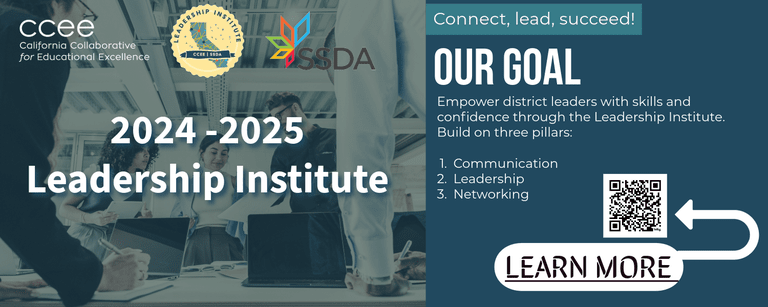Former ‘A-G guru’ comments on A-G access and success
Guest Column by Roman Stearns
July 1, 2024

Like most educators, parents, and UC/CSU colleagues, I’m in favor of keeping as many post-secondary options open for as many students as possible for as long as possible.
However, I fear we are being too myopic in our focus on A-G access and completion. Here’s why.
In the early 2000s, I worked at the University of California Office of the President leading a statewide project designed to improve access to A-G coursework and facilitate A-G course approval. We replaced an outdated and mysterious paper-and-pencil process for submitting A-G courses with a transparent online platform. We opened the floodgates for thousands of CTE courses to meet A-G requirements. And, we ushered in “program status,” enabling courses with standardized curriculum (e.g., AP, IB, Project Lead the Way, CDE-supported ag courses, etc.) to be approved once and applied to any/all high schools offering them. At the time, I was frequently referred to as the “A-G guru” because of my deep understanding of the requirements and statewide efforts to promote access and success.
Nearly 20 years have passed and the field has evolved since my time at UCOP. I have watched recent discussions about A-G requirements with great interest, and some concern.
The problem with the A-G requirements
As parents and educators, of course we want to keep options open for our kids. However, for too many students, school isn’t interesting, engaging and relevant to their futures. They are voting with their feet, which has led to the highest levels of chronic absenteeism in recent history.
In a recent EdSource commentary, I question whether the “core curriculum” is still core, that is, whether we should balance acquisition of content knowledge (A-G) with development of durable skills, competencies and mindsets — often captured by a “Graduate Profile” or “Portrait of a Graduate.” The A-G requirements represent legacy thinking about what’s important; it’s delusional to think that completion of the A-G sequence is ample preparation. The completion rate for students who are the first in their family to attend college reveals the inadequacy of A-G preparation. It takes more! Even A-G combined with grit is not enough (See “The problem with grit and higher education,” Alex Zaragoza, LA Times, March 7, 2024). However, because of our commitment to help students get to college, we continue to elevate the requirements as the centerpiece of education in California and pretend like completion will enable students to get through college.
Admittedly, it’s a thorny problem. We can’t ignore UC and CSU eligibility requirements, even if we believe they are outdated. Doing so would undermine student access and opportunity, which may be particularly damaging to those who historically have been most marginalized. Yet, we also can’t fully accept the status quo because it isn’t working.
If, for now, we are stuck with the current A-G requirements, let’s at least make those courses as appealing to students as possible in order to stimulate successful completion. There are five ways to do so.
Before we discuss each, let’s acknowledge that availability of and access to A-G courses does not guarantee that students will choose to take them and be successful in completing them. Successful completion requires students to show up, engage and be supported. For students to be successful in A-G courses, perhaps how we teach is as important as what we teach.
Identify the core (or power) standards
Our U.S. curriculum is often described as “a mile wide and inch deep.” We’ve learned the hard way that prioritizing broad coverage over deep learning is ineffective. For each and every A-G course, teachers should begin by collaborating with fellow teachers and/or district curriculum experts to identify the essential standards, which typically have a greater impact beyond the current grade level and are relevant across multiple courses and disciplines, thus moving away from compartmentalization and promoting transferable skills. Focusing on the essential skills will free up time and enable the strategies promoted below, while simultaneously fostering students’ opportunities to think critically, collaborate with peers and tackle topics in meaningful ways.
Make A-G courses engaging and relevant
Courses should be taught in ways that are highly engaging through project-based learning, service learning, civic learning, work-based learning and other forms of instruction that, by design, engage students in solving real-world problems and give them meaning and purpose. In doing so, we should be sure that A-G courses are learner-centered, giving students a voice in what they learn, a choice in how they learn and demonstrate their knowledge and skills, and a sense of agency to take ownership of their learning journey. When students have a strong sense of agency, they tend to be self-directed, self-motivated and able to center their identities. “Our equity efforts truly begin when we redefine success as the cultivation of student agency” (“Street Data,” Safir & Dugan, 2021).
The A-G requirements represent legacy thinking about what’s important; it’s delusional to think that completion of the A-G sequence is ample preparation.
Co-design with students to promote curiosity and inquiry
What if we said to students, “Here’s what we need to do. How do you want to go about it?” Teachers and students could co-design lessons and projects by unleashing student creativity and curiosity. Working together, curriculum and projects can be individualized based on student’s preferred learning styles, languages and cultural identities. When we let go of the reins of control, we’re often impressed by students’ capabilities.
Use equity grading to focus on demonstrated competency
Traditional grading policies can undermine student success in A-G courses. If teachers of A-G courses used equitable grading, they could assure that grades reflect (only) demonstrated mastery. Proponents of equity grading suggest that students be allowed to re-do assignments and retake tests until they reach mastery. They also suggest that we eliminate zeros, stop grading homework (practice), stop measuring participation, reimagine punitive behavior charts, and adjust other features of traditional grading policies that can be insensitive to students’ home environments, life challenges, personality types and cultural norms. Finally, equity grading removes the tendency of some teachers to use grades as an assertion of power and control over students, oft-times influenced by unconscious bias.
Create safe learning environments and offer support
Perhaps most important, students will only learn when they feel safe and supported, and when their cultures and identities are affirmed. By taking time to get to know every student by name, face and story, we can nurture the mutual respect that is necessary for authentic interactions and healthy learning environments. Fostering personal connections with students gives teachers credibility and engenders trust when offering honest feedback, providing tutoring and inspiring students to excel.
Roman Stearns is the founder and executive director of Scaling Student Success, a California partnership dedicated to educating the whole child by leveraging the power and potential of a “Graduate Profile” to drive transformational change toward a system that increasingly is student-centered, equitable, and competency-based.




